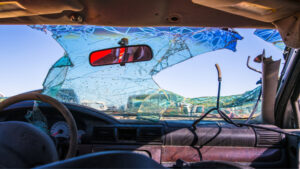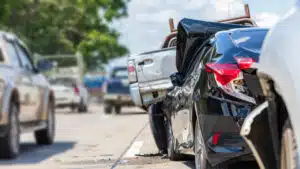Written By Chris Dolan and Alison Baird
This week’s question comes from Geraldine in San Francisco, CA, who asks:
Recently, a car struck me while crossing the street. I was not in the crosswalk. Luckily, I was ok, but I decided to call an ambulance due to a small cut on my head. I was not sure of what to do after I was hit, but a friend suggested over the phone that I file a police report. Can you tell me what the protocol is for victims of a car accident? I do have the police report and hospital records.
Geraldine from San Francisco, CA
Dear Geraldine,
I am glad you are ok after your accident. You are not alone. Many of us do not know what to do immediately after being hit by a vehicle. We can be severely hurt or in shock. There are some laws in place in California to help you maneuver the aftermath of your accident. Also, there are some steps you can take to ensure you can claim compensation for your injuries.
California Law
California Vehicle Code section 21950 requires drivers to yield to pedestrians crossing a roadway within any marked or unmarked crosswalk. This law means pedestrians have the right of way in both marked and unmarked crosswalks. Despite this law, every year, pedestrians are injured or killed trying to cross the street, walk through a parking lot, or step off a curb.
In 2023, California had the highest number of pedestrian traffic fatalities nationwide. In 2023, traffic incidents injured over 50,000 pedestrians and killed 498. Drivers opt for larger SUVs or utility trucks, and pedestrians are even more vulnerable to the larger vehicles. This article provides pedestrians hit by vehicles with information on their legal rights and the steps they should take after being hit by a car to preserve and protect their rights.
Immediate Steps to Take After the Accident
If your injuries are not life-threatening, you should call 911 to report the accident and ensure a police report is taken. It is important to preserve as much evidence at the accident scene as possible; this includes taking down witness contact information, photos of the accident scene and the vehicles involved, and, if possible, photos of the driver’s operator’s license and insurance card.
Medical Treatment and Documentation
You must follow through with all medical treatments recommended by the emergency room physician or your treating physician. Failure to promptly follow up with medical treatment can significantly harm your claim against the adverse driver.
For example, “Mary,” age 27, was hit by a slow-moving right-turning vehicle as she stepped off the curb into the crosswalk. She was knocked down and hit her head on the street. Mary refused medical treatment at the scene and called a friend to take her home. Over the next few weeks, Mary developed headaches, double vision, difficulty concentrating, and changes in her sleep, including trouble staying asleep. Mary, who did not believe she sustained significant injury after being hit by the car, sought medical treatment a month after the accident and was diagnosed with a head injury. It is common for people who receive concussions in an accident not to know they have sustained a head injury. The delay in treatment and lack of medical documentation made proving her claim more difficult. The insurance company for the driver that hit Mary claimed she could not have been injured in the accident because she did not seek medical treatment for over a month and that her injuries were pre-existing and were not caused by the accident. The insurance company offered Mary a small amount of money to settle the case and go away. Luckily, Mary contacted the Dolan Law Firm, and we were able to fight for her and obtain a $500,000 settlement.
Legal Rights of Pedestrians
California law provides that those who prevail in a civil action for personal injuries are entitled to compensatory damages, which are divided into two categories:
- compensation for monetary damages, which include but are not limited to past medical expenses and future medical expenses, past loss of earnings and future loss of profits, costs of living with a disability, and property damage.
- The second category of compensatory damages is non-monetary damages, which include damages for pain, suffering, and emotional distress.
Suppose a loved one is killed in an accident. In that case, the victims’ family can bring a wrongful death claim and are entitled to recover funeral and burial expenses, the financial support that the deceased loved one would have contributed had the accident not happened, and, in some cases, the deceased’s pain and suffering. You may recover compensation for loss of consortium and companionship of the deceased loved one and compensation for household services your loved one would have provided.
Seeking Legal Assistance with your Claims and Negotiations
Numerous issues can impact your case as a pedestrian. You may have a case even if you believe the accident was partially your fault. Comparative negligence is a legal doctrine in California that reduces the damages an injured party can receive in a negligence case based on the degree of fault each party contributed to the incident. This means you can recover damages in cases even if you are partially at fault. Your percentage of fault will reduce the total compensation awarded to you. There may also be issues with the intersection where the accident occurred or with adjacent property owners blocking views of the intersection.
If you are injured in an accident, you should consult a personal injury attorney specializing in pedestrian accidents. Dolan Law Firm provides a free case review and has offices in San Francisco, Oakland, Los Angeles, and Redondo Beach.
Email questions and topics for future articles to help@dolanlawfirm.com. Each situation is different, and this column does not constitute legal advice. We recommend consulting with an experienced trial attorney to understand your rights fully.










